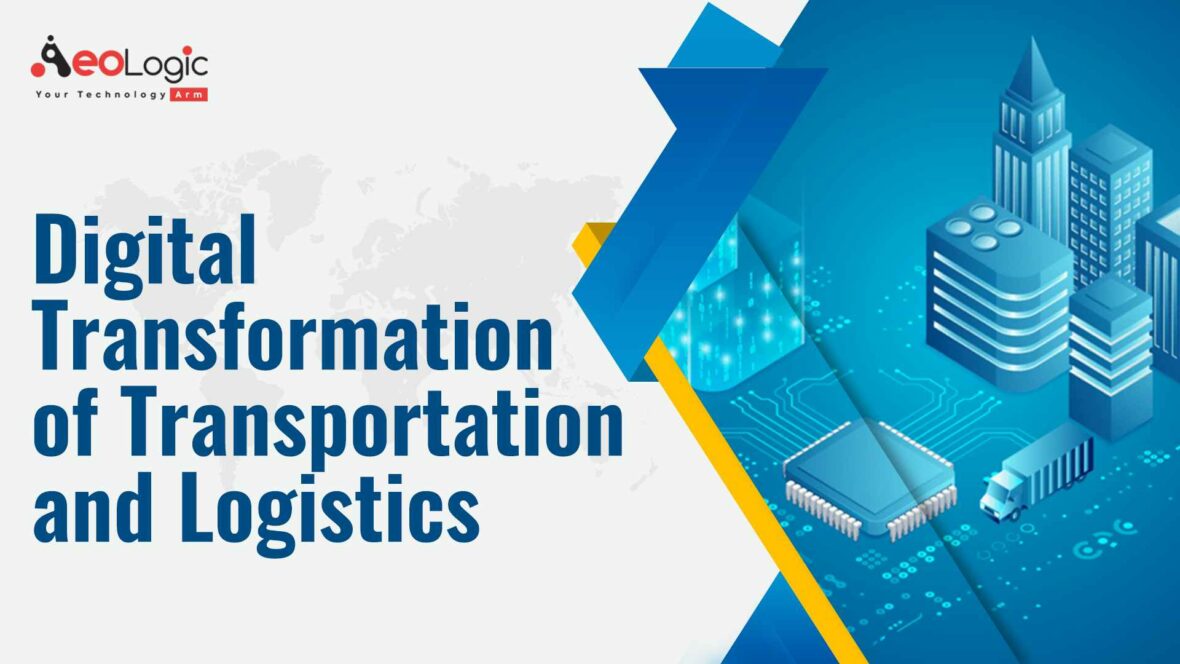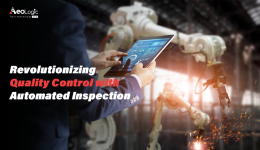The future of every business in every industry will be driven digitally. The digital transformation of transportation and logistics has already started and it is getting more and more advanced day by day. In this modern era of technology running a business is not as same as a few decades ago it used to be. Organizations know the benefits of implementing the technologies very well, these technologies are quite easy to use, and also their results are phenomenal as it optimizes the overall business from in and out.
In this blog, you’ll get to know the way the digital transformation of transportation and logistics is happening globally.
Since there are many stakeholders involved in the workflow of transportation coordinating with them was one of the major challenges for transportation management but with digitization, the integration of these stakeholders is being done easily. This results in increasing the level of customer satisfaction, the work efficiency, and lowering the costs as well.
WHAT IS DIGITAL TRANSFORMATION?
A digital transformation will be occurring when an industry adopts digitalization in all aspects of the business. The approach in which firms communicate with their clients and undertake operations and deliveries undergoes a fundamental transformation. As an outcome, the industry’s operation is drastically altered.
With the increasing digitalization of several businesses, Speed & Time: are the essential factors driving toward increased efficiency and have become even more imperative for the logistics industry. The introduction of digital technology has resulted in a logistical transformation with faster, leaner, more efficient, and more productive operations. With the advent of automation services, these alterations are being adopted at a faster rate than ever before.
WHY MUST TRANSPORTATIONS AND LOGISTICS INDUSTRIES UNDERGO DIGITAL TRANSFORMATION?
The digital transformation of transportation and logistics sectors is strongly interlinked with other economic sectors. Moreover, the improved efficiency of logistics services will be adding to overall economic growth. This fact is applying equally to separate countries and the world economy.
The adoption of digital transformation of transportation and logistics was quite sluggish until recently. In last few years, however, the industry has observed the emergence of new competitors who works more closely with technology companies. This is relating to a market worth hundreds of billions of dollars, and several players would like to considerably expand their market presence.
Therefore, to increase end-to-end visibility, back-office operations and logistics processes are hugely becoming digital. Technologies like Artificial Intelligence, Machine Learning, Big Data, Natural Language Processing, Blockchain, and Cloud Computing are pushing current digital transformation, displacing outdated technology such as AS400 green screens. These enhanced technologies are boosting supply chain productivity, reducing costs and errors, and benefiting all sectors of the logistics industry, including trucking transportation, supply chain management, international transportation (ocean and air), and shipment tracking.
The logistical competitive advantage is attained from speed and time. As a result of technological development, both B2C and B2B clients are having less patience, and everyone wants their items and deliveries on time. Wondering why? Because of real-time economy, which was laid by a hyper-connected business world, also in transportation and logistics (as well as supply chains). Research shows, 76.9% of executives agree or highly agree that the development of a real-time economy has an impact on their business processes. And hence, driving the digital transformation of transportation and logistics sectors. However, this shouldn’t be at all that surprising, if the same research were conducted today (since it was conducted at the end of 2013), the outcome would be considerably higher.
Impact of Digitization on Transportation & Logistics
Following are the areas which are positively impacted by digitization –
Autonomous Vehicles
Autonomous vehicles use sensors, lasers, and cameras to navigate the roads and there are actually five different levels of automation. At present, our car is at level one with features like cruise control and parking sensors but with level five the car can drive itself completely..
With computers at the wheel, we get from point A to point B faster with less congestion and less pollution. Once you arrive at the destination the car will even park itself. All these things are wonderful but their biggest benefit is safety. Every year more than a million people die due to car accidents worldwide and 90 percent of them are caused by human error. Sometimes people get tired, they lose concentration, and every now and then just get it wrong.
There’s still a lot of work to be done but driverless cars could dramatically cut the number of accidents on the roads and save millions of lives.
Connected Vehicles
In order to increase the efficiency in the operations, the use of connected vehicles will be increased in the future. With the help of virtual mobility services all the data that have been generated can be easily collected from various devices. This data can be used by enterprises as an insight into maker-demand, road accidents, fuel prices, and many more. This will lead to optimizing the productivity of businesses.
This technology will also be extremely useful in the logistics industry as it will enable better communication between autonomous cars, trucks, and even drones.
Geolocation
is not a new concept and businesses have been using it for quite some time now, but the data collected have not been applied appropriately due to a lack of tools for sharing, gathering, understanding, and analyzing the information. In the coming future, the use of geolocation will be highly widespread as it will be the biggest tool to increase the overall productivity of businesses.
Future of Drones
The implementation of drones for the delivery of goods is no longer a dream rather it has become an exuberant reality. The usage of drones has already become an important part of many industries; it has also shown positive effects on many businesses. Drones are small in size and they can fly easily at a decent amount of height, this allows them to deliver the goods in the remote areas resulting in enhancing their reach. In the future, self-driving drones will be used not only to deliver goods but also to make significant changes in the time of traffic congestion.
Conclusion
To sum up, digitalization in the world of transportation and logistics will turn out to be the most exuberant transformation of all time. Its astonishing results have already been mentioned above but not to mention it is just the tip of the iceberg there is a lot more to it.
Subsequently, there are businesses that are currently avoiding the active application of the digital transformation of transportation and logistics, perhaps they should reconsider their stances. In order to get the numerous benefits of digitalization. However, there is still potential for improvement so that digital transformation may become easier and the importance of technology in the sector may become more apparent. As a result of amplified competition, the quality and cost of products have leveled off, and delivery speed is now the deciding factor for customers and clients.
Connect with us if you want to incorporate digital transformation to your business!
FAQs
How technology is transforming the future of logistics?
Technology is restructuring the logistics industry by augmenting productivity in the supply chain and reducing costs and errors. All arenas of the logistics industries like transportation, shipment tracking, international transportation (ocean and air), and supply chain management have profited.
How can digital transformation reshape the travel and transportation industry?
Digitalization is bringing a host of opportunities for the public transport sector, including opportunities to boost efficiency and enhance quality, decrease costs, open up new revenue streams, improve customer experience and loyalty, and explore new areas of services.






